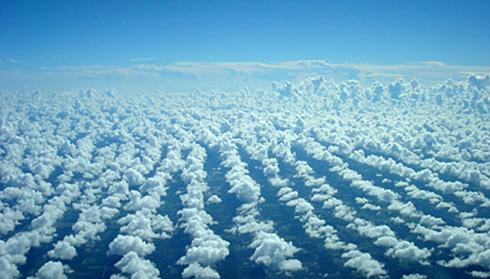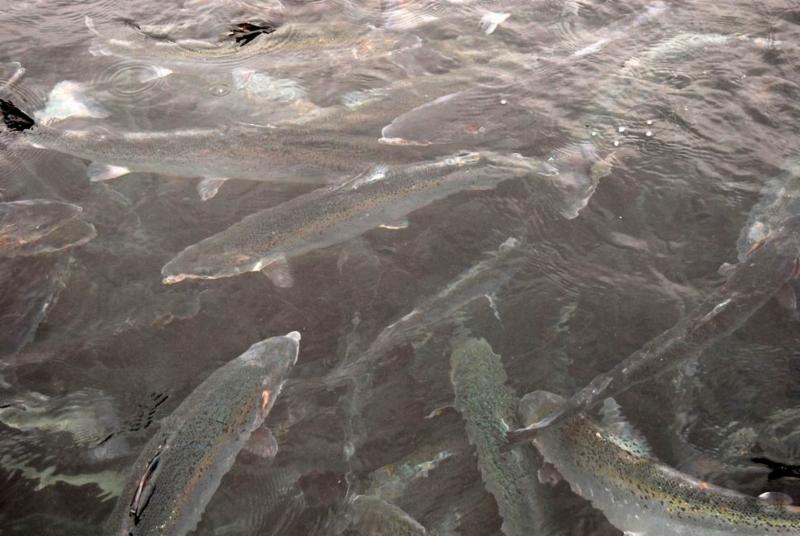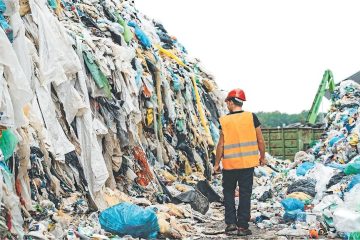Microbeads only a Fragment of our Microplastic Pollution Problem
May 1st, 2017
Microbeads, tiny pieces of plastic found by the hundreds of thousands in shower gels, face-scrubs and toothpaste, were once trumpeted as a cosmetic “must have” – a crucial ingredient in the battle for beauty. Now they have become a hated ingredient.
The US, Canada and the Netherlands have banned them from cosmetics because of their potential impact on the environment, and the UK is preparing to ban them from the end of 2017.
In a bid to get the ball rolling in Ireland, Green Party Senator Grace O’Sullivan brought forward legislation to ban microbeads in late September 2016, which would have also included plans to monitor levels of microplastics in Irish waters.
However, the Minister for Housing, Planning, Community and Local Government, Simon Coveney blocked the bill, stating that it failed to include detergents and scouring agents, and did not include sufficient investigative or enforcement powers.
In its place, the Minister launched a public consultation on a potential microbeads ban in certain products such as cosmetics, body care products and some cleaning products which closed in March. Over 3,000 submissions were received.
Mr Coveney outlined his delight with the response, which he said will feed into upcoming legislation. “This clearly demonstrates that civil society is extremely concerned by marine environmental issues, which I find reassuring,” he said.
While such moves as welcomed, will a ban on microbeads do enough? Experts, such as Galway-Mayo Institute of Technology’s (GMIT) Dr Anne Marie Mahon, say that it will only solve a fraction of the microplastics problem.
Microplastics
Microplastics are tiny plastic granules, pellets, fibres and fragments less than 5mm in diameter. They can be as small as two to three centimetres in length and are often as thin as a human hair.
“The cosmetics industry is only one very small piece of the picture,” says Dr Mahon, as cosmetic microbeads make up just over 4 per cent of microplastics entering the marine environment from Europe.
According to Mahon, various other industries play a far greater role in creating and distributing microplastics, such as the booming medical devices industry, which produces microplastic waste through milling and grinding processes involved in making products.
However, she reserves particular attention for the clothing industry. “Most of the microplastics that have been found in environmental samples taken from water, whether it be from freshwater or marine samples, are fibres, and these fibres are derived mostly from synthetic clothing that we wear,” she says.
“Thousands of fibres come out per wash into the wastewater and then that goes into the sewage treatment plant,” she adds, with fibres from furnishings such as curtains and carpets also an important source.
While Mahon’s current research focuses on freshwater systems, similar findings have been made off our coasts, with every square kilometre of the ocean estimated to contain about four billion plastic fibres.
In a recent study covering more than 12,700 km of the north-east Atlantic by former GMIT researcher, Dr Amy Lusher, more than 90 per cent of samples captured contained plastics. Analysis of the samples indicated that 89 per cent of the captured plastics were in fact microplastics, the majority of which were fibres rather than microbeads.
“I think it’s important to make people aware that it’s not just microbeads that are affecting animals and it’s not just microbeads that we’re finding in the environment,” says Lusher, now a member of the Joint Group of Experts on the Scientific Aspects of Marine Environmental Protection (GESAMP) – a body that advises the United Nations.
“I’m really glad that we can watch different countries banning them or new moves to combat plastics in cosmetics, but I think that there are other forms of plastics that need to be targeted as well and it shouldn’t be the key focus.”
Sewage Sludge
Back on land, Mahon also mentions the role of the construction industry, which produces microplastics from many hazardous polymers. For example, the sawing of polyvinyl chloride (PVC) pipes and the cutting of PVC windows produces huge amounts of microplastics that are being released into the environment.
Other sources include the abrasion of synthetic rubber tyres, household waste, and surprisingly, the recycling industry, which shreds or flakes plastic materials prior to washing.
Once in contact with the plastics, this water is then pumped down the sewer as waste water and into a treatment plant together with millions of particles of microplastics, 90 per cent of which is captured in sewage sludge.
Although this may sound good, as we now know where the microplastics are, Mahon says that lime stabilisation, the most common treatment method used in waste water treatment facilities, may actually be exacerbating the problem by shearing microplastic particles, making them even smaller.
As the microplastics break down into smaller particles, their surface-area-to-volume ratio increases, leading to a greater chance of being absorbed by organic materials in the sludge, 80 per cent of which ends up spread on agricultural land.
“What happens to it when it is spread on the land is an absolute unknown,” according to Mahon, who is currently leading an EPA-funded project to examine microplastics in sewage sludge.
The impact on human health is also unknown at this point, either through direct contact with microplastics or through the food chain. A review by the European Food Safety Authority found that although the digestive tract of marine organisms often contains large quantities of microplastics, they are normally discarded before consumption.
Lusher presented similar findings through a study of mammals beached on the Irish coast, including True’s beaked whales, one of the rarest and least understood animals on the planet. Her findings indicated that the whales have the ability to remove plastics from their system in the same way they would eject pieces of bone and items they don’t need.
Lusher plans to further elaborate on her findings and undertake wider research on the impact of microplastics on the marine environment. “We are still trying to find out the effects of plastics because they are such a new and, until recently, a very emerging pollutant, that we were actually unaware of the detrimental effects it was having on the environment,” she says.
According to Mahon, as plastic production increases – quadrupling since the 1980s alone – we need to take more action now to understand the scale of the impact of plastics, on course to outweigh fish in the oceans by 2050.
Laboratory studies have presented early findings on the impact on organisms, including decreased feeding, weight loss, and energy depletion, while a recent French study on oysters highlighted the impact of microplastic exposure on subsequent generations, rather than just the individual which ingested the microplastics.
“Although the lab trials use environmentally irrelevant or exaggerated levels of microplastics, looking ahead to the future, this could be the reality,” Mahon says. “The plastics industry is growing at such a rate that we need to address it now, even if the impacts are not too visible.”
A version of this article appeared in The Irish Times on 28 October 2016.
[x_author title=”About the Author”]







